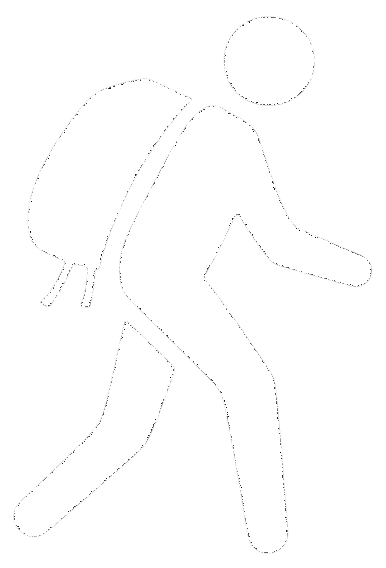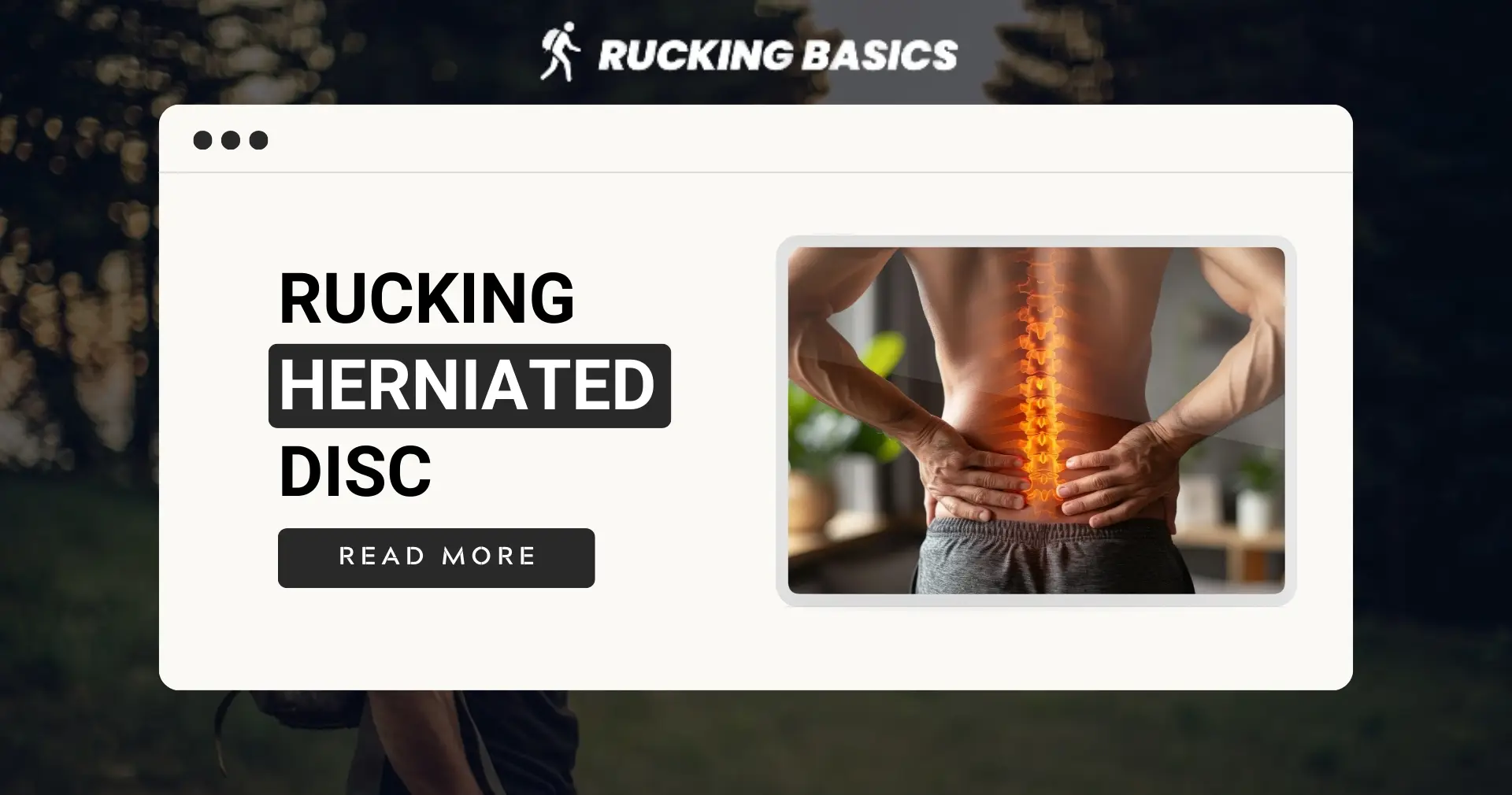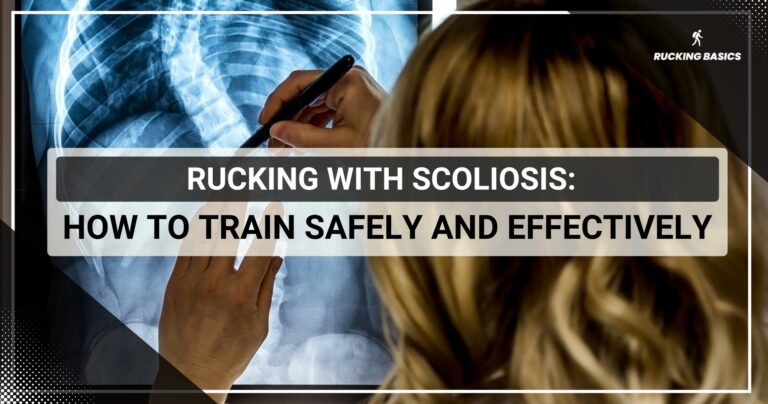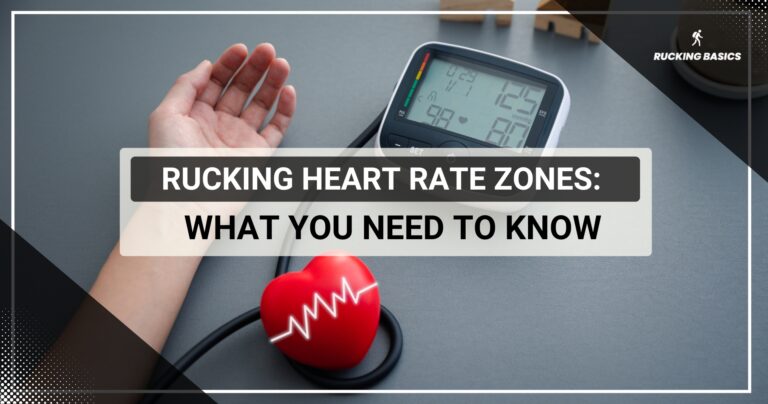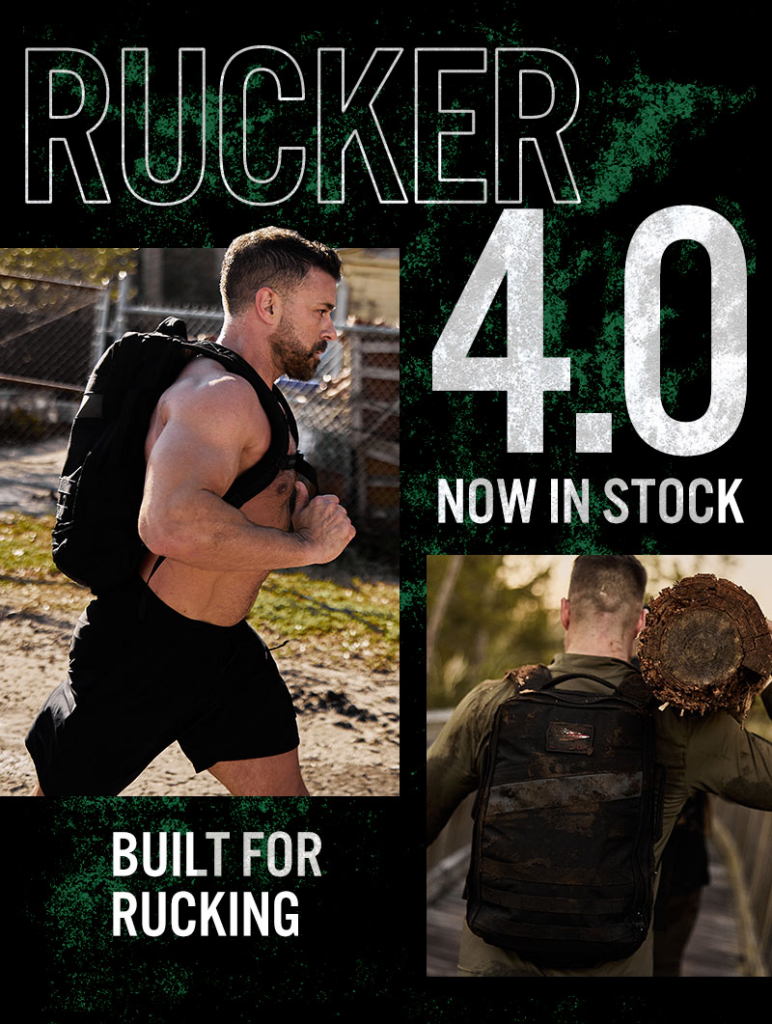My father is a rucking/hiking/airsoft/outdoor/you-name-it enthusiast with multiple herniated discs, so I am very familiar with this topic. He was always asking himself and others whether it was safe to continue with all those activities with a back injury.
A herniated disc can bring pain and discomfort, making everyday activities challenging, let alone a physical endeavor like rucking. You are grappling with the limitations of your body while desperately wanting to stay active.
The good news is that a herniated disc doesn’t have to sideline you completely, even during early phases of physical therapy!
In this guide, my goal is to explain essential dos and don’ts for rucking with a herniated disc. And I think I’m pretty trained to help you with this topic because I’m a personal trainer, plus I have experience (my dad’s experience and numerous clients.)
The Impact of Rucking on a Herniated Disc
A herniated disc is not a death sentence, but it is not harmless either. That’s why we have to start such an important topic by understanding the biomechanics behind rucking.
The weight of a rucksack compresses the spine, and as we walk, every step produces an impact that can travel up from our feet to our lower back. Proper form can help, but rucking still poses specific challenges to those with herniated disks.
The severity of your condition, along with factors like your fitness level and history of back pain, will play a big role in your experience. Prolonged spinal compression and strain on the herniated area can lead to inflammation, nerve irritation, or even worsening symptoms, which no one wants. That’s why you have to be extra careful.
Terrain, distance, and duration also play a role, but I’ll say more about that later.
Despite these risks, rucking is still highly beneficial both mentally and physically, even if you have back concerns. The key is to strike a balance that allows you to enjoy the benefits without putting yourself in harm’s way.
Preparing to Ruck with a Herniated Disc
I guess if you have this medical problem, you already have a trusted doctor with whom you can consult. That’s definitely the first thing you should do. Your physical therapist or orthopedic specialist should give you personalized advice and the green light to start rucking.
Once you have medical clearance, you can create a safe rucking plan. Remember that our advice is only general. Each disc injury is different, and only your doctor, who has insight into the MRI and other findings, can discuss it in detail.
Strengthening your core muscles is especially critical for stabilizing your spine and minimizing the risk of aggravating your injury. A strong core makes rucking more effective. For tips on building a solid foundation, check out this guide on rucking abs.
In addition, ask for strength and conditioning exercises that you can do to prepare your whole body for strenuous rucking. Focus on core stabilization and back strength, but don’t forget the other parts of the body.
Essential Dos for Rucking with a Back Injury
The following are basic things that you must consider regardless of the severity of your lower back pain or disc herniation:
- Start with Minimal Weight: The optimal weight for rucking is 10-20% of your body weight, but that does not apply in this case. Don’t be ashamed to start with just a water bottle or even an empty pack. I know it’s tempting to jump right into a heavier ruck, but that can be detrimental to your spine. Your back will thank you for going slow and steady. A weighted vest, such as GORUCK Training Weight Vest 2.0, is also an excellent choice because the weight (ruck plates) is the most stable and there will be no unexpected weight movement that can cause pain.
- Posture and Form: Proper posture is non-negotiable, especially with a bulging disc. Keep your torso tall, shoulders back, and avoid slouching or leaning too far forward. Slightly bending your knees and bracing your core provides additional support and stability as you move. Also, knowing the importance of rucking posture can make all the difference. Small adjustments, like keeping your head aligned with your spine, reduce strain on your lower back and help you move comfortably.
- Use Supportive Gear: Suitable gear is a real game-changer for protecting your back. The best rucksacks for rucking are designed to distribute weight evenly. Many find a sternum strap, hip belt, or back brace helpful, as they offer extra stability by keeping the load centered and controlled.
- Warm-Up and Cool-Down: Both warm-ups and cool-downs are important steps when dealing with a herniated disc. A dynamic warm-up—like gentle leg swings, torso twists, or a few minutes of walking—prepares your muscles and joints. After the ruck, a solid cool-down with stretches focused on the hamstrings, hip flexors, and lower back can relieve any tightness and prevent stiffness.
Important Don’ts When Rucking with a Herniated Disc
With a herniated spinal disc, avoiding intense rucking sessions or steep uphill climbs is wise, especially in the early stages. High-intensity rucks add strain to your back that’s hard to manage, and inclines put extra stress on the lumbar spine. Starting on flat terrain is a safer way to build strength and endurance.
Keep in mind what you read in the previous paragraph about weight. You must not put anything heavy in your weighted backpack while struggling with pain and discomfort.
And never rush recovery. Patience is crucial. Slow progress is vital in avoiding setbacks. Give your body time to rebuild strength and endurance at a safe pace. Even if it feels like slow going, it’s the right way. Long-term recovery is far more valuable than any short-term gain or fun.
Recognizing Signs to Stop Rucking with a Herniated Disc
Watch for sharp or shooting pains that radiate down the legs, numbness, tingling, or any noticeable changes in how you walk. These are signals that rucking (or some other high-intensity physical activity) is placing too much stress on the spine.
Sudden changes in posture or balance should also raise a red flag. These warning signs tell you to pause, reassess, and perhaps adjust your approach.
Also, certain symptoms go beyond what we can safely manage on our own. If the pain becomes constant or intensifies even at rest, or if we experience muscle weakness or loss of control in our legs, go to the doctor without delay. These could be signs of nerve compression or worsening disc health.
Also, pay attention to positive indicators. Notice if your back feels more stable, if you’re moving with greater ease or can handle a ruck with less pain or strain. These are signs that our spine and supporting muscles are improving.
Final Thoughts
Rucking herniated disc certainly comes with many challenges, but with the right mindset and approach, you can still enjoy it and even reap benefits from it.
There will probably be moments when you think your rucking/sports journey is over due to back pain, but don’t despair. There are many ways to improve your condition, and even if surgery is the only option, after it, you can gradually return to the things you love.
To prioritize your health, you don’t need to give up; just adapt and learn how to enjoy them safely.
And if you’re looking for resources to build a strong foundation for rucking, these books on rucking can guide you toward safer practices and better results.
Keep moving forward, and we wish you many more successful ruck marches.
Frequently Asked Questions (FAQs)
How does rucking compare to traditional hiking in terms of back safety?
Rucking and hiking both have their benefits, but rucking places additional strain on the spine due to the weighted backpack. While hiking can be less intense on your back, it’s essential to consider terrain and weight when deciding which activity is safer for you. Gradual rucking with proper weight management may still be a viable option.
Can I use a walking stick or trekking poles while rucking with a herniated disc?
Absolutely! Using walking sticks or trekking poles can provide extra stability and support while rucking. They help distribute weight and can reduce pressure on your spine.
What role does core strength play in safely rucking with a herniated disc?
Core strength is vital for the stability of your spine while rucking, with or without degenerative disc disease. A strong core helps reduce pressure on your lower back and improves your overall posture.
Can rucking worsen leg pain or tightness in core muscles?
Rucking can sometimes exacerbate leg pain, low back pain, or cause tight muscles. Tightness in these areas may also indicate compensatory movements due to a herniated disc. A proper warm-up, focused stretching routine, and periodic breaks during your ruck can help minimize these issues and prevent overuse injuries.
How does rucking impact conditions like sciatica or sciatic nerve pain?
For individuals with sciatica, rucking may worsen symptoms if the added spinal compression irritates the sciatic nerve. However, if managed carefully, rucking strengthens supporting muscles, reducing nerve pressure over time. Focus on specific exercises for the glutes and core to support your lower back and monitor for symptoms like radiating leg pain during or after activity.
Should I get an MRI scan if rucking increases my back discomfort or triggers new pain?
If rucking or specific exercise leads to worsening or chronic pain, especially in the lower back or legs, consulting a doctor for an MRI scan is a wise step. An MRI scan can identify underlying issues like spinal stenosis or additional disc herniations that might complicate your condition.
Can strength training with weight plates benefit those rucking with a herniated disc?
Yes, incorporating strength training with weight plates can build a stronger foundation for rucking, especially for stabilizing the back and supporting your posture. Focus on exercises that target the glutes, hamstrings, and core to better distribute the load during rucks. Start with lighter weight plates and gradually increase as your strength improves.
References
Sedrak P, Shahbaz M, Gohal C, Madden K, Aleem I, Khan M. Return to Play After Symptomatic Lumbar Disc Herniation in Elite Athletes: A Systematic Review and Meta-analysis of Operative Versus Nonoperative Treatment. Sports Health. 2021 Sep-Oct;13(5):446-453. doi: 10.1177/1941738121991782. Epub 2021 Feb 10. PMID: 33563131; PMCID: PMC8404721.
Overley SC, McAnany SJ, Andelman S, Patterson DC, Cho SK, Qureshi SA, Hsu WK, Hecht AC. Return to Play in Elite Athletes After Lumbar Microdiscectomy: A Meta-analysis. Spine (Phila Pa 1976). 2016 Apr;41(8):713-8. doi: 10.1097/BRS.0000000000001325. PMID: 26641847.
Jørgensen MB, Holtermann A, Gyntelberg F, Suadicani P. Physical fitness as a predictor of herniated lumbar disc disease – a 33-year follow-up in the Copenhagen male study. BMC Musculoskelet Disord. 2013 Mar 9;14:86. doi: 10.1186/1471-2474-14-86. PMID: 23497269; PMCID: PMC3599998.
Kose G, Hatipoglu S. The effect of low back pain on the daily activities of patients with lumbar disc herniation: a Turkish military hospital experience. J Neurosci Nurs. 2012 Apr;44(2):98-104. doi: 10.1097/JNN.0b013e3182478e57. PMID: 22367273.
